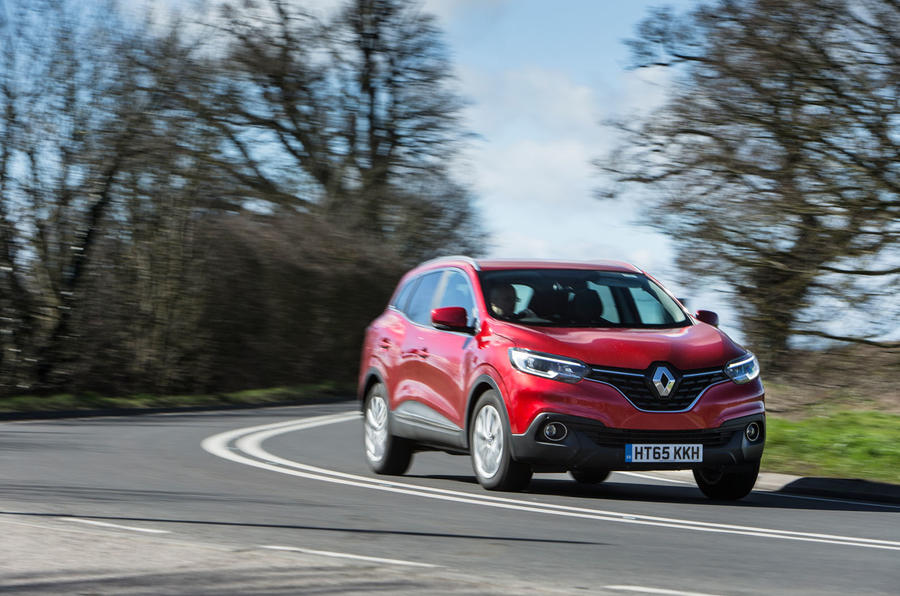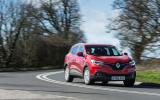Never mind Elon Musk’s prediction of an artificial intelligence apocalypse and the human race’s enslavement by robots; if the new car registration data and the product strategies of every manufacturer from Ssangyong to Rolls-Royce are to be believed, we are destined to be taken over by crossovers and SUVs.
So, with appropriate subservient deference, we welcome onto the Autocar fleet one of our future automotive overlords, the Renault Kadjar (emphasis on the ‘jar’). As you probably know, the Kadjar is sister car to the current Nissan Qashqai, sharing much of its mechanical make-up and a range of engines. Renault, perhaps, would prefer us not to dwell too long on that Japanese/British engineering association and instead be happier for us to point out how well the Kadjar slots into the French car maker’s line-up above the popular Renault Captur. Which it does.
Fittingly, given the rise in popularity of the Kadjar and its ilk, I have stepped into it from that most ubiquitous of conventional five-door family hatchbacks: a Ford Focus. Quite literally, in fact. I parked the Focus within feet of the Renault and a few short minutes later was on my way, sitting slightly higher, in a slightly bigger car, with slightly more space inside and slightly sad to see the Ford go. Sad because I was aware that I was about to experience an inevitable deficit in dynamic ability, but also slightly excited because I have a quiet appreciation of the chunkified high-rise aesthetic of the pseudo-off-roader. Some you win, some you lose.
Interestingly, my first two impressions - that the larger sheet metal area of the Kadjar’s doors relative to those of the Focus made them feel light and almost flimsy in my hands, and that the Renault’s steering wheel was noticeably smaller than that of the Ford - quickly melted away. (Incidentally, the flimsy door thing doesn’t bother me. Lightness matters, and an artificially weighted door in the name of a more premium feel strikes me as being a slightly vulgar excess in this day and age.)
Other impressions have stuck. I think the Renault looks good, for one thing, especially with its Flame Red metallic paint. Park the Kadjar within 50 metres of a current Qashqai and the structural and dimensional similarities are almost impossible to miss, but the new Renault family face and black and chrome generic styling flourishes above the sills work particularly well here.
That metallic paint is our car’s only optional extra. Dynamique S Nav trim comes extremely well equipped as it is, with automatic dual-zone climate control, automatic headlights with an auto high/low beam function, cornering foglights, lane departure warning, a multi-position boot floor (including a fully flat setting) and one-touch folding of the 60/40 split rear seats. Our car also has Dark Carbon leather and cloth trim and Renault’s R-Link 2 multimedia system, which I’m still trying to properly fathom. We haven’t got off to a great start. Pairing my phone hasn’t been a problem, but call quality via Bluetooth isn’t great and the touchscreen can be annoyingly inconsistent in its responses - which is doubly irritating given that an inordinate number of inputs can be required even for some quite simple operations. Initial niggles aside, that trim and kit roster helps to put our car in the upper-middle echelons of the Kadjar pricing structure.






























Join the debate
Add your comment
heeey cool